Roman Market - Forum of Caesar and Augustus
The Agora of Caesar and Augustus, also known as the Roman Forum of Athens, was the commercial centre of the city during the roman period. In 51 BC the Athenians sent their envoy, Herod of Marathon, to Julius Caesar to ask for funds for a new market, since the need for public commercial space was urgent. Julius Caesar accepted to help financially, but due to political turmoil, the construction began and was completed under the emperor Augustus, between the years 19-11 BC.
| CREDITS: The models of the constructions are after the CAD plans by Chrysanthos Kanellopoulos, professor of Archaeology in the University of Athens and were created by Dimitris Tsalkanis for Ancient Athens 3d. |
The Forum was rectangular, measuring 111×98 metres approximately. The shape was irregular as the construction followed the course of pre-existing roads and city blocks that were demolished for its construction.
It was a building with a big central court surrounded by colonnades, where the merchants could set their benches. The stoas of the four sides housed more shops, while the eastern and western sides had a series of enclosed shops too. The peristyle was constructed of gray Hymettus marble, while the details, such as the capitals, the entablature etc, were made of white Pentelic marble. The central court was paved, probably during the reign of Hadrian (117-138 AD) and stands out for its colours, as it contains both of the above materials in zones. The Forum had two main entrances (propyla): the eastern and the western (Gate of Athena Archegetis).Gate of Athena Archegetis
The Gate of Athena Archegetis was the monumental entrance that connected the Roman Forum with the ancient Agora of Athens. It is located in the western part of the compound and is of doric order, constructed of Pentelic marble. In the center of the architrave exists an inscription in honour of the benefactors, Julius Caesar and Augustus:
| Ο ΔΗΜΟΣ ΑΠΟ ΤΩΝ ΔΟΘΕΙΣΩΝ ΔΩΡΕΩΝ ΥΠΟ ΓΑΙΟΥ ΙΟΥΛΙΟΥ ΚΑΙΣΑΡΟΣ ΘΕΟΥ ΚΑΙ ΑΥΤΟΚΡΑΤΟΡΟΣ ΚΑΙΣΑΡΟΣ ΘΕΟΥ ΥΙΟΥ ΣΕΒΑΣΤΟΥ ΑΘΗΝΑ ΑΡΧΗΓΕΤΙΔΙ ΣΤΡΑΤΗΓΟΥΝΤΟΣ ΕΠΙ ΤΟΥΣ ΟΠΛΙΤΑΣ ΕΥΚΛΕΟΥΣ ΜΑΡΑΘΩΝΙΟΥ ΤΟΥ ΚΑΙ ΔΙΑΔΕΞΑΜΕΝΟΥ ΤΗΝ ΕΠΙΜΕΛΕΙΑΝ ΥΠΕΡ ΤΟΥ ΠΑΤΡΟΣ ΗΡΩΔΟΥ ΤΟΥ ΚΑΙ ΠΡΕΣΒΕΥΣΑΝΤΟΣ ΕΠΙ ΑΡΧΟΝΤΟΣ ΝΙΚΙΟΥ ΤΟΥ ΣΑΡΑΠΙΩΝΟΣ ΑΘΜΟΝΕΩΣ |
| The People of Athens, from the donations made by the god Gaius Julius Caesar and the his son the Emperor Caesar Augustus (dedicated this Gate) to Athena Archegetis, when Eukles of Marathon was general of the hoplites, who succeeded his father Herod in the responsibility (of this project) and as an envoy, in the year when Nikias son of Sarapion of Athmonon was Archon. |
The eastern propylon
The eastern entrance was in form of a propylon in Ionic order and made manly of gray marble from Hymettus mountain.
The southern entrance and the fountain
























